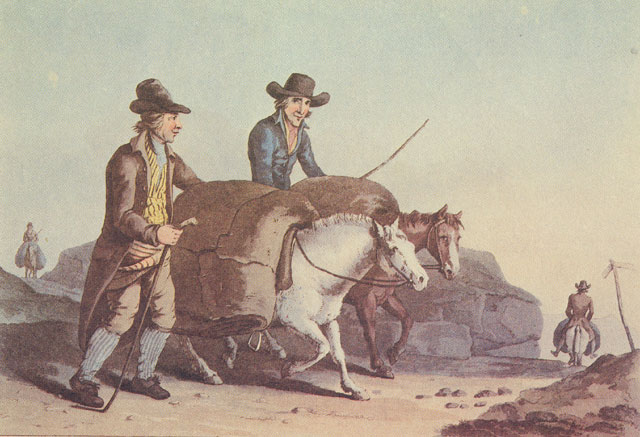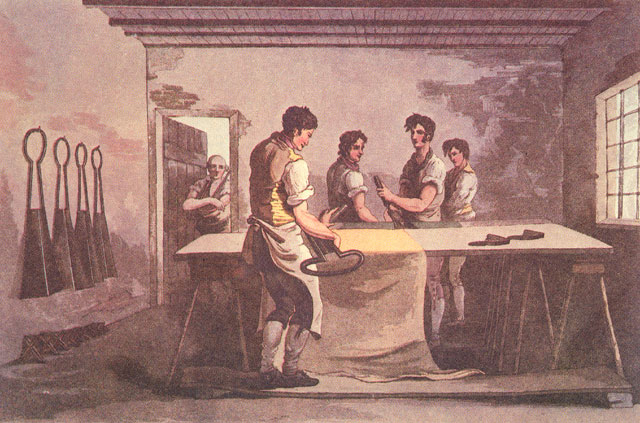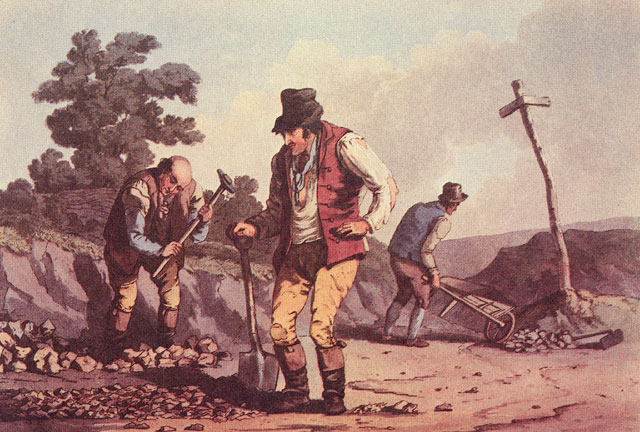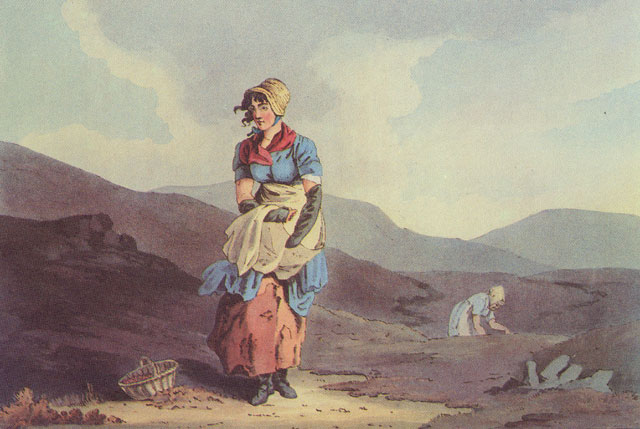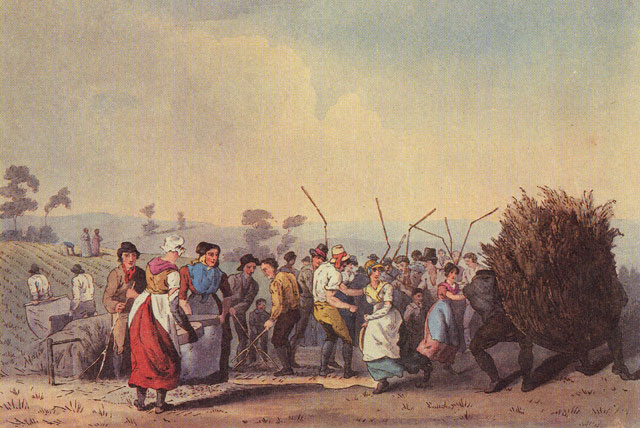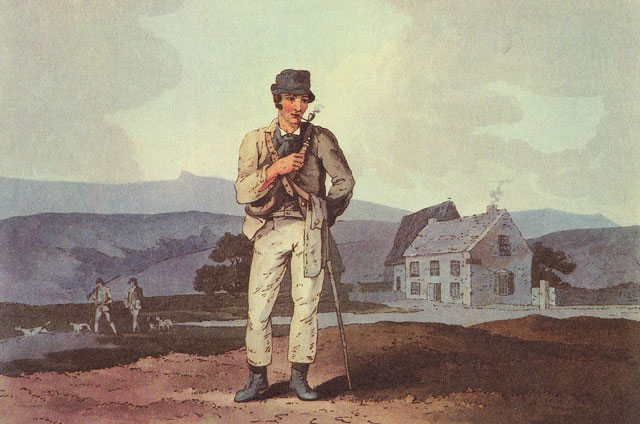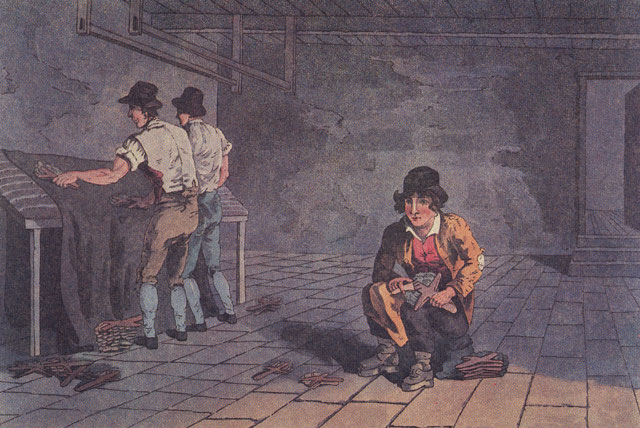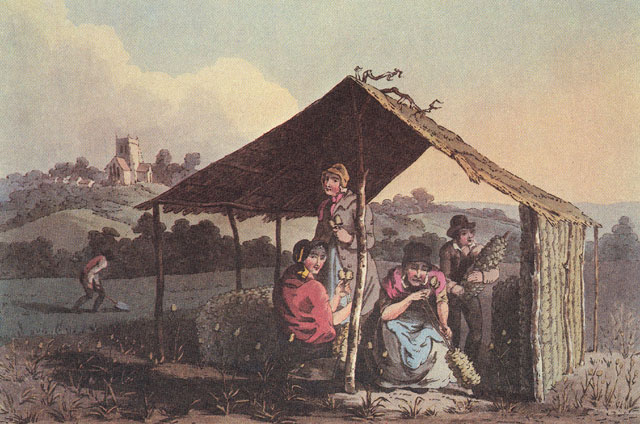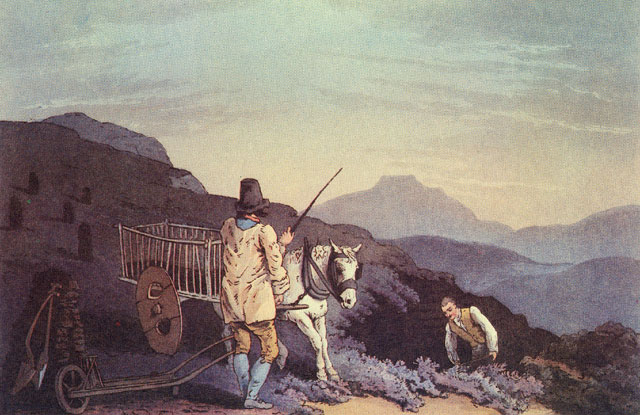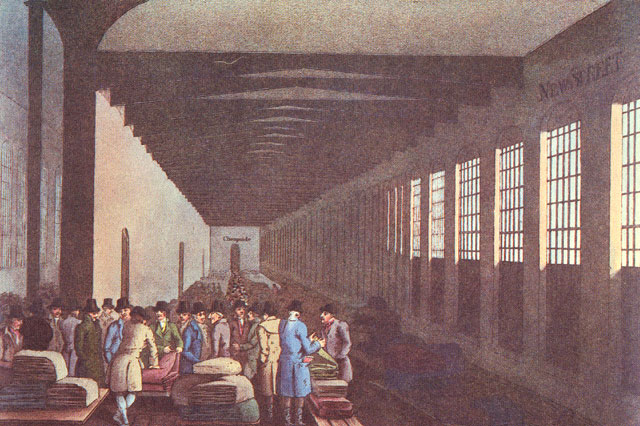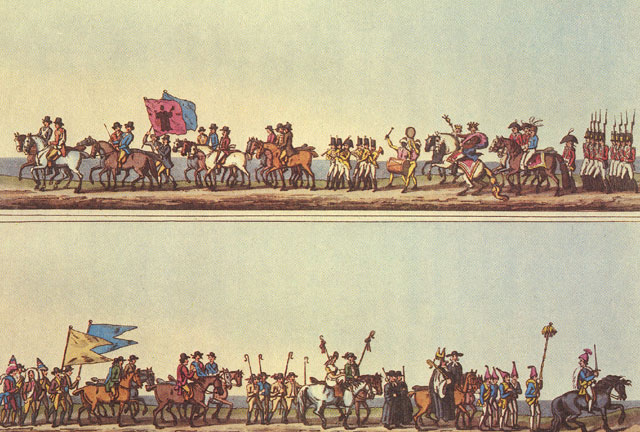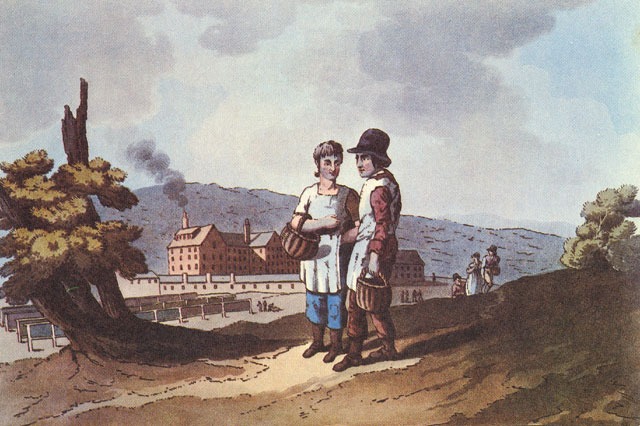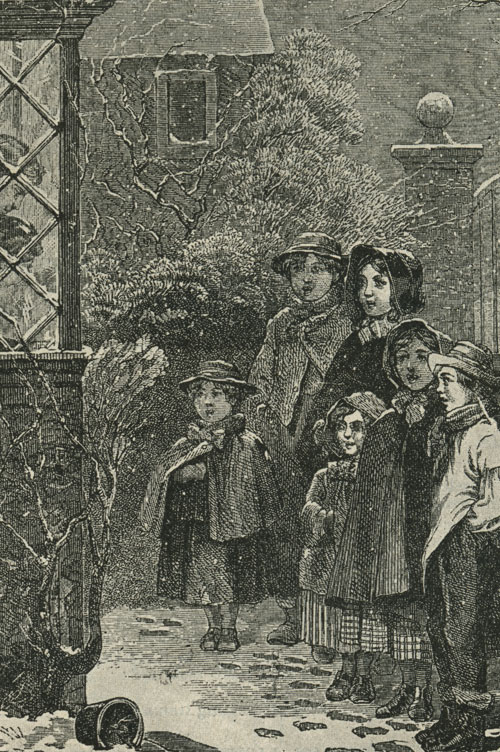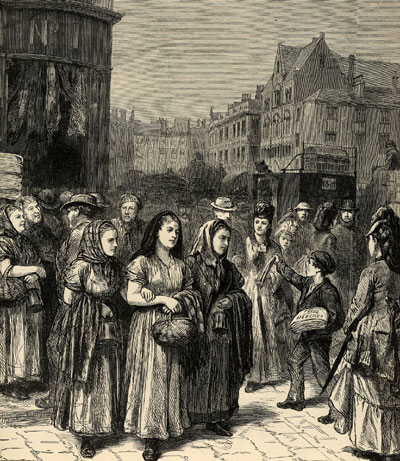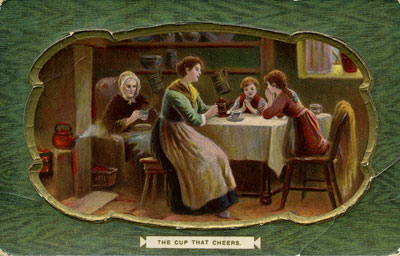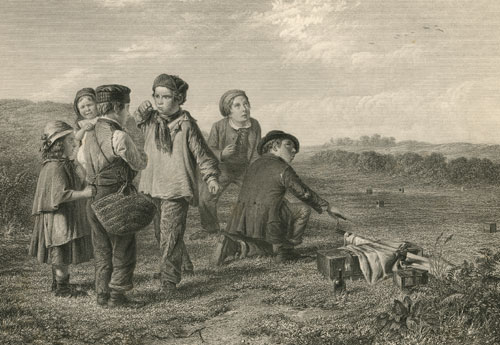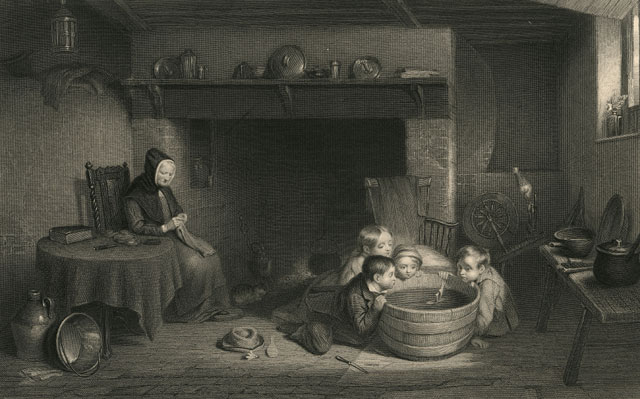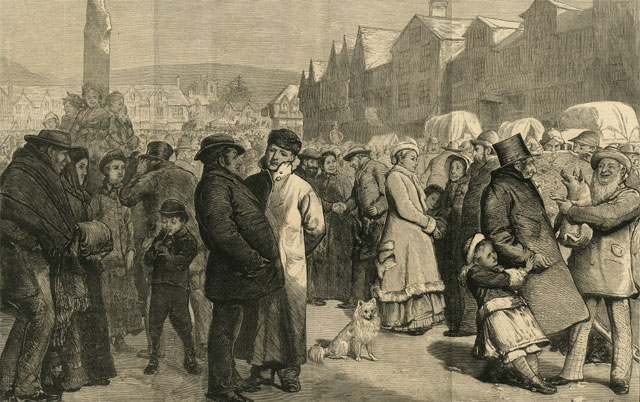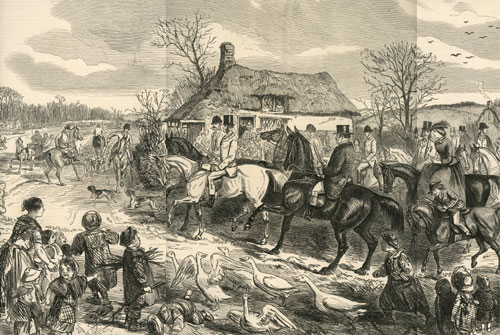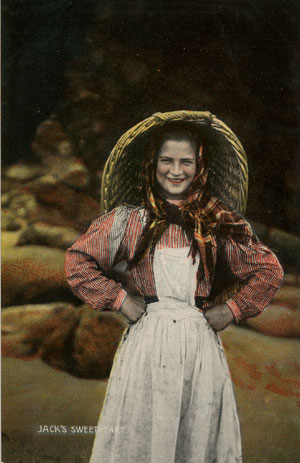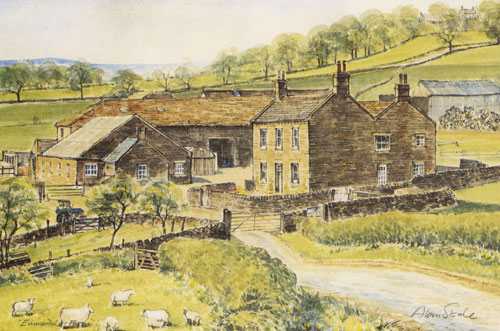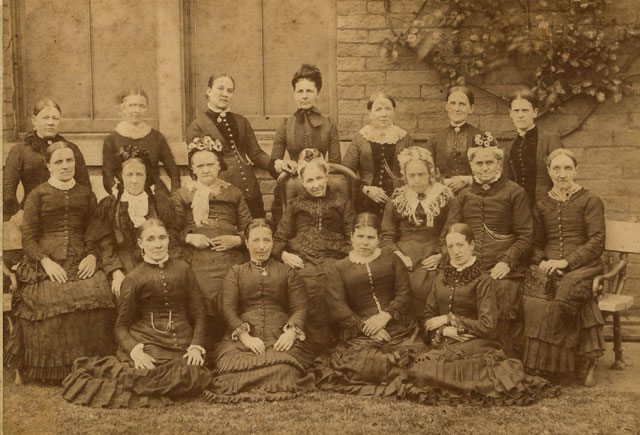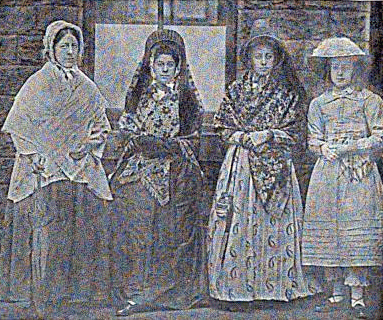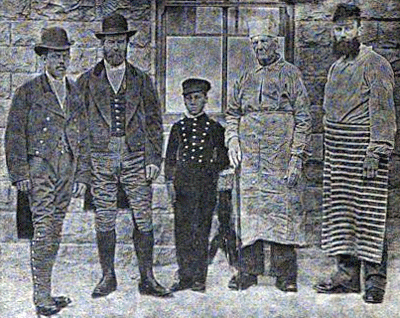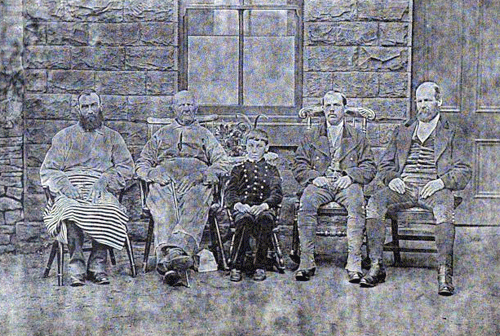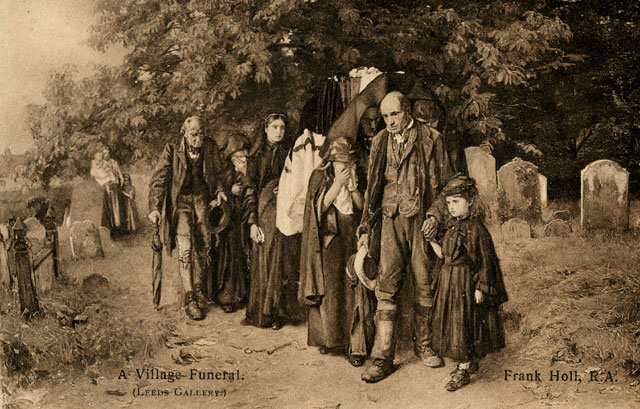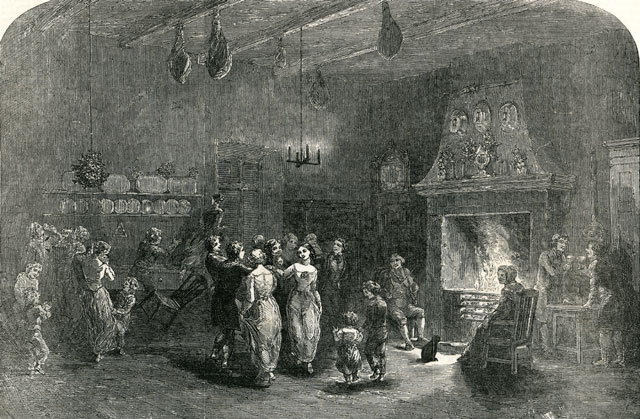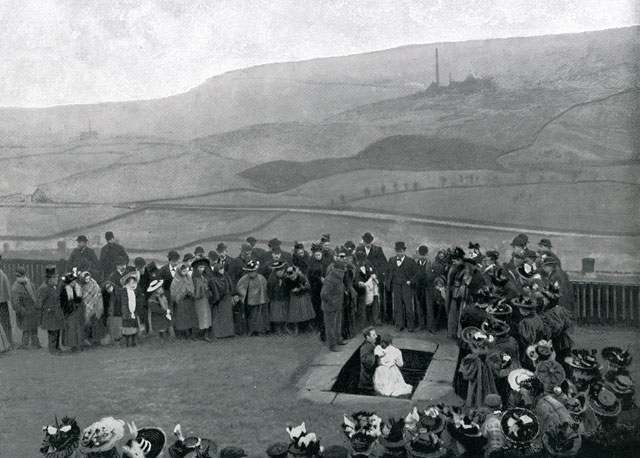| Hours and Wages
1740 Wages
In the 1740s, the ordinary pay per day for a tailor, a cooper, a blacksmith, and most other
handicrafts was about 9 pence. Common laborers earned less. At the same time the best cuts of
veal, beef, or mutton cost 1 pence per pound. A knife cost 1 pence. A pound of tobacco cost 1
pence. A pint of brandy cost 1 pence.
A man's wages were seldom enough to feed a growing family.
It was important to have a wife and/or children who worked.
1832 Wages in Yorkshire Textile Mills
A male factory worker (working as a spinner) could earn between 14s. and 22s. a week.
A female power loom weaver could earn between 5s. to 10s. a week.
1839 Wages in Leeds
Cloth drawers earned 24s. 6d. per week.
Slubbers earned 24S.
Shoemakers made about 14s.
Children employed as piecers earned 2s. 6d. to 5s. per week.
1858 Wages in Leeds
Slubbers 27 shillings per week
Weavers Handloom 15 shillings per week
Power loom weavers 10-12 shillings per week
Drawers 30-40 shillings per week
Piecers, girls and boys 6 shillings per week
1820-1823 Work Week
Between 1820-1823 a normal work week was seventy two hours.
1850 Half A Day Off On Saturdays
A half day off on Saturdays was granted to textile workers under
the Factory Act of 1850.
1855 Reduction in Hours for Women and Children
As a result of workmen putting pressure on the factories, hours for women and children
were reduce in 1855 to 55 hours a week.
1870s Introduction of the Nine Hour Day
In the 1870s a nine hour day was introduced.
Paid Holidays
In the 19th century there were NO paid holidays.
The traditional three
holidays of Christmas, Easter and Whitsuntide (Pentecost or Whitsun is observed on the
seventh Sunday after Easter), were officially sanctioned but were NOT paid holidays.
Effect of the Factory System on Family Life
Before the advent of factories the family lived and worked all together
in one space. After people started working in the mills they were together only
for eating and sleeping and on Sundays.
Naming Patterns
One of the most important devices in tracking families through several generations is
naming patterns. Particularly in the early records, people got their children's names
from family sources. Children were named for their parents, grandparents and other family members.
According to A. Ashwell Cadman in Gomersal, Past and Present, the first obvious introduction
of non family names was during the Commonwealth. The Commonwealth lasted from 1649-1660,
when a commoner, Oliver Cromwell, ruled England. During the Commonwealth reading the
bible in the vernacular became fairly common and biblical names became popular. Apparently
the only King's name to become popular to any extent was George. There were four Georges who
reigned from 1714 to 1830. My own observation is that around the Industrial Revolution
in the late 1700's and early 1800's the use of double names came into fashion.
These were names that combined two first names like, Mary Ann Law (the daughter of
William Law in 1836) or the full name of a grandparent or other relative, such as
George Stell Sykes (1826). Around the same period the use of a surname as a
first name also became popular, including Law Land (1858), who was given his mother's maiden name
as a first name.
I believe that the custom of the double name derived from an ancestor may have started earlier
and not been recorded in the parish records. For example Charles Land married Elizabeth Dunford in
1787. There first son was named James. While there was no middle name listed for this James Land
subsequent generations of James Lands in several branches were James Dunford Land. Likewise
Charles Land (born in 1767) was simply listed as Charles Land whereas subsequent Charles Lands
were Charles Lewis Land.
The Parish Records
Many of the original parish registers are missing and the existing records are transcriptions
such as Bishop's Transcripts. The Bishops Transcripts were hand transcribed copies of the parish records which were sent to the Bishop once a year. Whenever anything is transcribed some things are bound to be omitted or copied wrong.
Even when the original parish records exist there are lots of years missing.
In addition there was a tremendous amount of underreporting in the years that are not missing. Underreporting not only occurred in the transcriptions but also in original records and includes all three categories or rites: baptisms, marriages and deaths.
Marriages of course could and often did take place in a parish other than where one was born.
People moved around a lot more than I thought they would have, even from the earliest times.
Moves, at least until the Industrial Revolution, often occurred at the time of one's marriage. While it is not always true, women tended to marry in the parish where they were born, even if they subsequently moved to the village where their husband was born. The marriage of males are often hard to locate because the found their brides surprisingly far afield. It is difficult to know if some marriages were unreported or just occurred in another parish. There is also a strange phenomena where people marry in a parish that they otherwise do not appear to have a connection with. There are numerous instances of couples marrying in Leeds parish when they appear to have lived both before and after in Batley or Birstall parish. The opposite is also true with people marrying in Batley or Birstall parish when they both appear to have lived both before and after in Leeds.
The underreporting of baptisms is more glaring. There are numerous cases where the death of a
child will be reported when there was no baptism reported for that child. There are families with
big gaps in the baptismal records of the children, and then twenty years later a person will
show up living in the same village and having a family using all the same names as the family
with the gap in the baptisms. How can I be truly certain that this person belongs where I
think they do? Sometimes it is quite clear. Other times it leaves me unsure of what I have. There is of course the possibility that some children were baptized in another parish for a variety of reasons. There are also clear cases of children not being baptized until they are several years old.
There are also lots of deaths that were unreported. A case in point was Rachael, the wife of
Benjamin Law, whose death was not listed in the parish records, but whose tombstone inscription
I found. Death records can be very important in helping to determine who the mother of a
given child was. Since only the father's name was included on the baptismal record, the only
way to know who the mother was is to track the family from the marriage, through the baptisms
of all the children. If there are large gaps, there is the real possibility that the mother
died and the father remarried. If the mother's death was unreported and the father remarried in another parish, it would be quite easy to have the wrong mother listed.
All of this is compounded by the possibility that a family were members of a nonconformist congregation whose records did not survive or that they were simply not religious at all and avoided baptisms all together.
| 